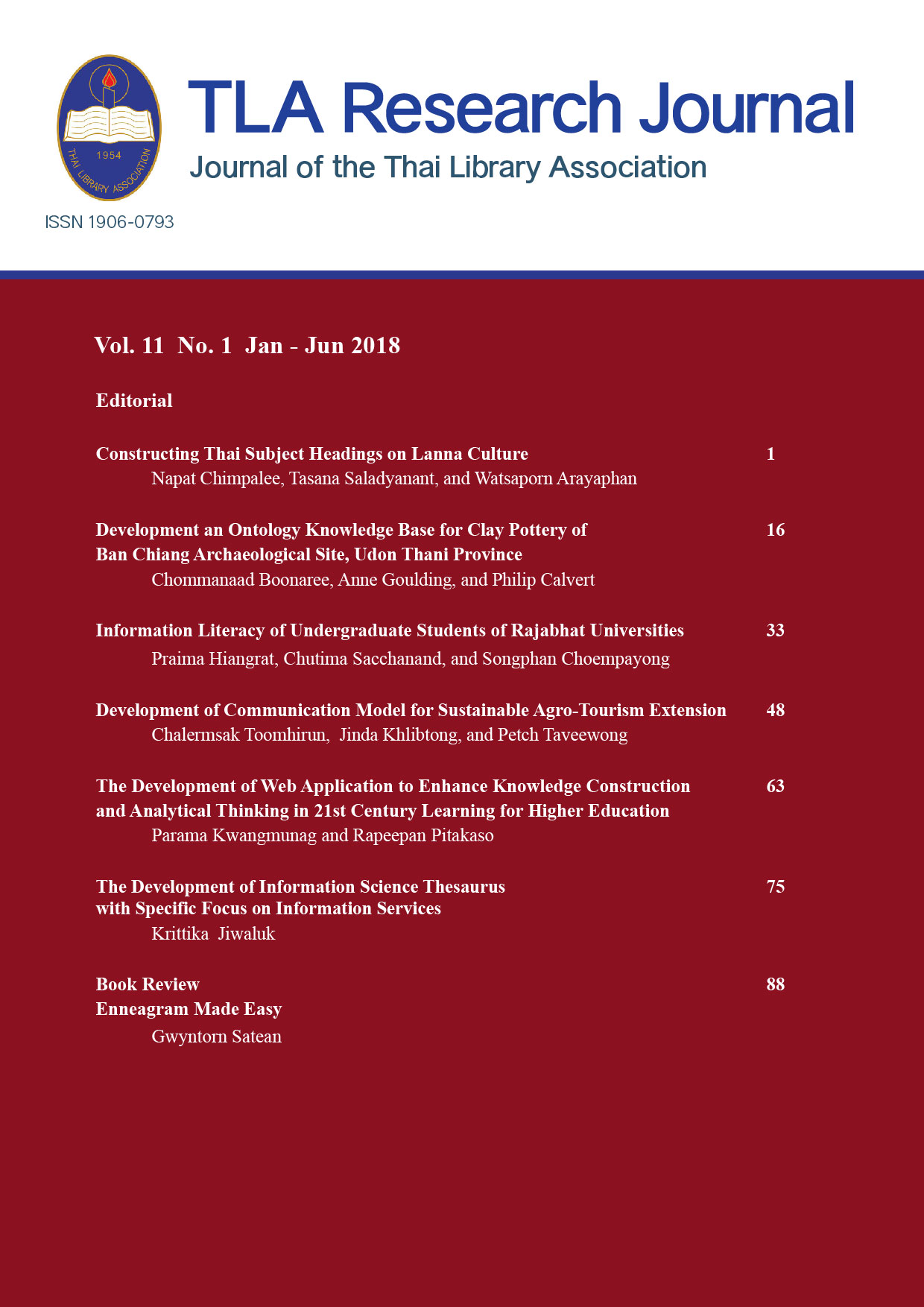The Development of Web Application to Enhance Knowledge Construction and Analytical Thinking in 21st Century Learning for Higher Education
Main Article Content
Abstract
The purposes of the present study were 1) designing and developing a web application to enhance knowledge construction and analytical thinking in the 21st century learning for the students in higher education 2) evaluating web application to enhance knowledge construction and analytical thinking in the 21st century learning for students in higher education. The study employed the developmental research design method comprising 2 stages: 1) design and development and 2) evaluation. Participants of the research were 12 experts and 39 third-year industrial engineering students, Faculty of Engineering, Ubon Ratchathani University. The results revealed that: 1) the design and development of web application comprised of 5 components, namely, 1) Problem Base 2) Learning Resource 3) Scaffolding 4) Center for Collaborative Learning, and 5) Coach. The results of the experts’ evaluation suggested that all learning elements of the web application were suitable and had efficiency in enhancing the knowledge construction and analysis thinking of the students. Moreover, the findings in terms of the use of the web application in terms of learners’ achievement and the analytical skills showed that the learners’ performance in the posttest was significantly higher than that of the pretest. With regard to the results of the questionnaire, the learners found that all aspects of the web application were appropriate and could help them improve their knowledge construction and analytical thinking skill.
Article Details
บทความทุกเรื่องที่ลงตีพิมพ์จะได้รับการตรวจอ่านโดยผู้ทรงคุณวุฒิ ความคิดเห็นและบทความที่ปรากฏในวารสารนี้ เป็นของผู้เขียนซึ่งมิใช่เป็นความคิดเห็นของคณะผู้จัดทำ และมิใช่ความรับผิดชอบของสมาคมห้องสมุดแห่งประเทศไทยฯ การนำบทความในวารสารนี้ไปตีพิมพ์ซ้ำต้องได้รับอนุญาตจากคณะผู้จัดทำ
All articles submitted for publication will be reviewed by the academic reviewers. The editorial board and TLA claim no responsibility for the content or opinions expressed by the authors of individual articles or columns in this journal. Reprinting of any articles in this journal must be permitted by the editorial board.


